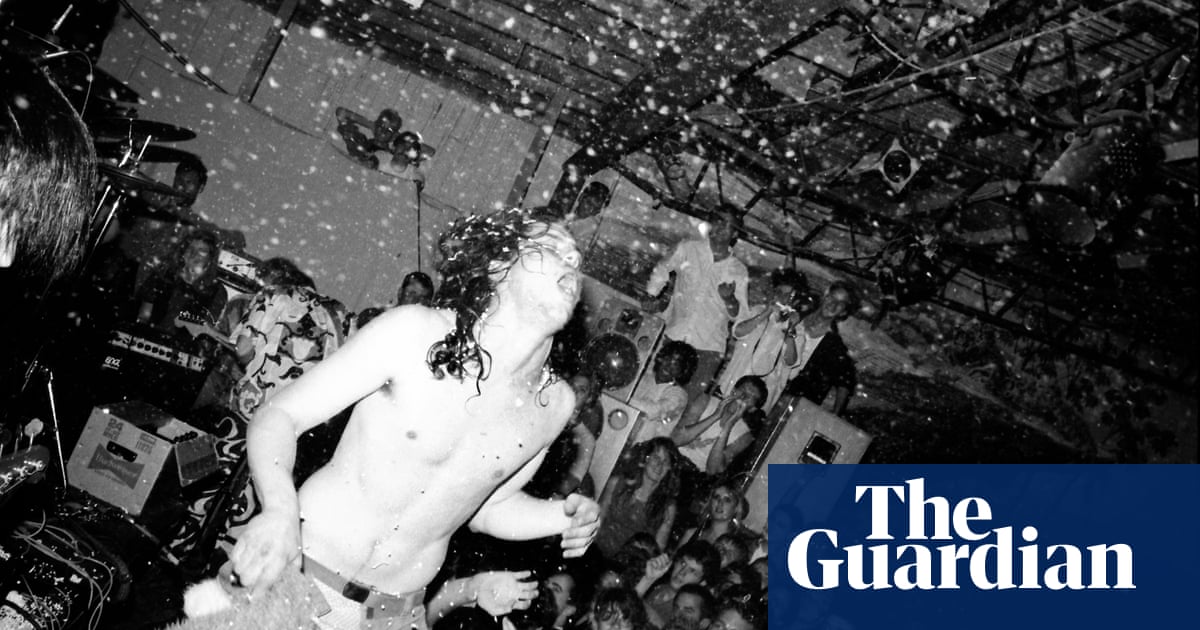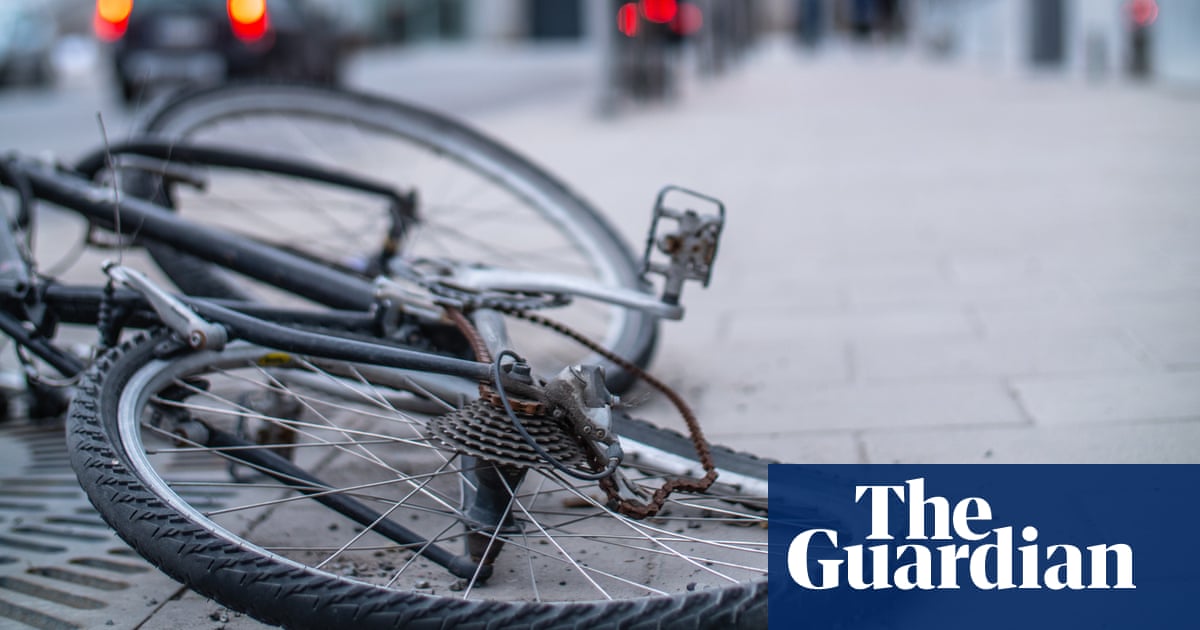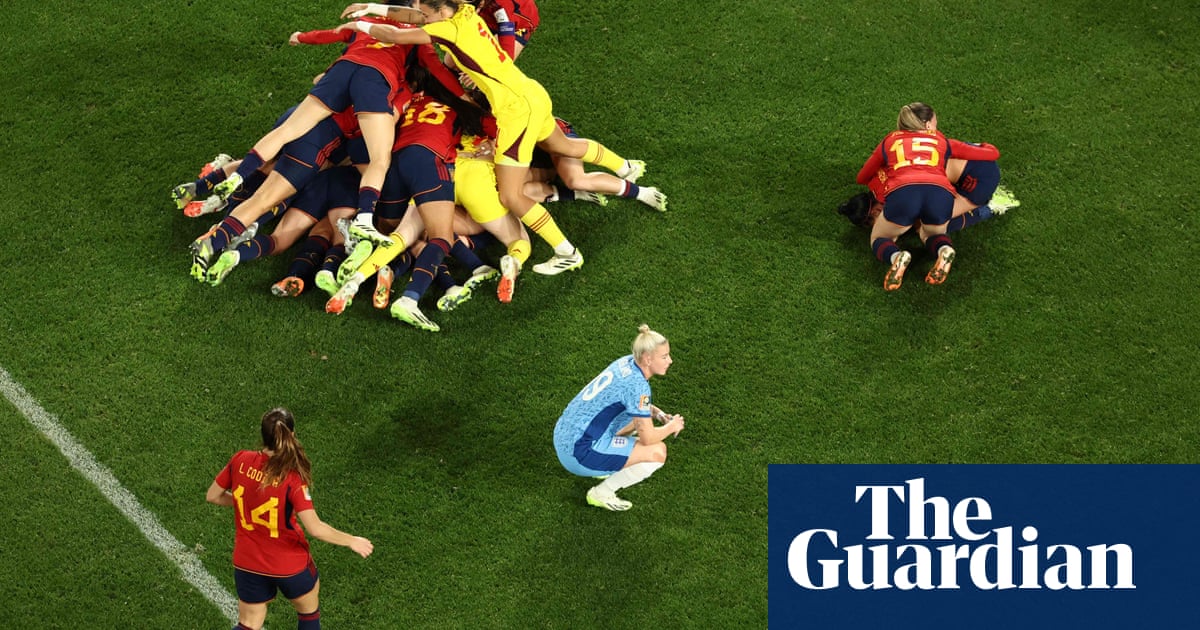
Nudity, raging fires, belching smoke, blinding strobes, nightmare-inducing surgical videos, fights and firearms: these are some of the things you may have encountered at a Butthole Surfers show while being pummelled by a squealing cacophony of acid-fried psychedelic noise-rock, as a man tripping wildly in his underpants screams at you through a megaphone.
“People would be running out of our shows throwing up,” says Paul Leary, the band’s guitarist. “We were punishing these poor souls.”
The dormant Texas band’s first two albums and a live EP are being reissued this month, with more LPs due later this year, bringing back to life the feral energy of a band who still sound like no other. Fusing noise rock with British post-punk sensibilities, tape manipulations, mangled vocals and warped psychedelia, the band – loved by everyone from Kurt Cobain to Orbital and the Red Hot Chilli Peppers – were unique from the off. “We were different from most punk bands,” says drummer King Coffey, who made up a primal and hypnotic dual drumming partnership with the late Teresa Nervosa. “We came out of the hardcore scene, but at that point bands were just going faster and faster and getting more macho. It was a really close-minded scene, musically and socially. We were playing for punks but not playing punk music – we were more informed by modern art.” And for a moment, in the post-Nirvana gold rush of the early 1990s, they almost made it big.
The band was formed in San Antonio in 1981 by university students Leary and Gibby Haynes. Haynes was captain of the basketball team and voted accountant of the year, while Leary had desires to be a stockbroker. Despite this, the pair also had a taste for the weird. They created their own magazine, Strange VD, which featured photos of abnormal medical ailments with made up descriptions and fictitious diseases. Leaving one of these in the photocopier at work hastened the end of Haynes’s short-lived accountancy career.
Music was something they almost fell into. “Our first couple of shows were performance art with music as a background,” says Leary. “We were more into the art side of it, and then music kind of took over.” Anything that might resemble a strategy was nonexistent. “We had no plan whatsoever,” says Leary. “We were into dadaism and loved the random nature of how things turn out.” Looking back on their motivations in the band’s early days, Haynes simply says: “The whole thing was an attempt to get attention. We made art for money and attention.”
Fuelled by beer, pot and LSD, along with a dark sense of humour and a propensity for the obscene, the band ended up in a years-long state of never-ending movement, turning up in towns with nowhere to live, no shows to play, and hoping to pick something up along the way. “We lived in a van for years and none of us had a life outside the band,” says Coffey. “It was like we’d signed up for this cult and there was no turning back. We burned our bridges as far as having any hope of living a normal life.”
The band were desperately poor. They scraped around on the floor for loose change and ate out of dumpsters. At one point the entire band had scabies. It was brutal and not everyone could endure it. Before landing on long-term member Jeff Pinkus, the band burned through bass players at almost the same rate they went through lighter fluid on stage – which Haynes would pour over a cymbal before bashing away, creating a percussion fireball. One bass player’s final straw was when he begged for milk because his body was craving sustenance, only to be told there was no budget to accommodate such a luxury. “We ran ourselves like a commune,” says Coffey. “We had one communal fund and we put it all back into the band.”
Their wonky records and travelling freakshow-like live performances earned them a steady stream of hardcore fans keen to experience the chaos. Many would turn up after hearing word of mouth tales of these LSD-soaked crazies, hoping for their own psychedelic experience, but would come out more in a state of shell-shock than a higher state of consciousness. The band turned venues into scenes of horror, showing videos of autopsies, explosions, and penis reconstruction surgery as noise wailed, fires burned, smoke churned and lights popped. “We had a whole wall of airport grade strobe lights,” recalls Leary. “When they started flashing you couldn’t block the flash. You could put your hands over your eyes and you would see your veins and through to your skeleton. We’d have to stop the show because somebody in the audience was having an epileptic seizure – that happened a few times.”
Between 1986 and 1989, the performance artist Kathleen Lynch joined the band as a naked dancer, and some concerts – including an all-ages show that didn’t hold back on nudity – ended in a riot. While some of their antics were mere shock tactics and puerile gross-out behaviour, the band were also attempting to tap into something more significant and transcendent. They unlocked and harnessed a raw and brutalising sonic intensity to match their visual hellscape, which few bands could match. “It was like scream therapy for me,” says Coffey. “It was so primal. To feel the pain, pressure and joy of it all, and to be in that moment, was something else.”
“I don’t know any other way to describe it than psychedelic,” says Haynes, reflecting on the chaos of the shows. He is hard to get much out of that is coherent. The 66-year-old offers up lots of elongated pauses, silences and murmurs, as though constantly trying to kickstart his brain into action, and goes off on tangents about US rapper Post Malone, country act the Chicks and synth pop, while one question is met with him simply singing a Talking Heads song at me. “It’s because I smoked pot earlier,” he explains later, after he forgets the punchline to a long story about meeting Shane MacGowan. “Oh shit! God dammit! I blew the whole fucking story!” he yelps, berating himself, before descending into a cackle. “I’m totally losing it. It’s not even the early onset. It’s the onset.”
That Haynes and the band made it out alive is a miracle, so the fact that the singer – known for firing shotguns into the air at shows, getting naked and fighting security guards, and accidentally setting fire to himself – is a little scatty in his mid-60s is understandable.
Perhaps the strangest thing to have happened, in a career full of strangeness, is that the Butthole Surfers almost crossed over. In the post-grunge alt-rock boom of the 90s, even this travelling circus of perma-high maniacs were deemed worthy of throwing money at. They signed with Capitol for 1993’s Independent Worm Saloon, with John Paul Jones of Led Zeppelin as producer. They had a hit with the somewhat MTV-friendly track Pepper in 1996, the accompanying album Electriclarryland reached the US Top 40, and they found themselves on the multimillion-selling soundtrack to Baz Luhrmann’s Romeo + Juliet. But the remainder of the decade, as alt-rock waned in popularity and the band reached their 40s, was filled with management bust-ups, lawsuits with their old label, and an aborted album. The underwhelming Weird Revolution, from 2001, remains their final release. They played live in sporadic bursts in the ensuing years but haven’t played now for the best part of a decade.
Of course the Butthole Surfers were never going to have a neat, cohesive trajectory and age gracefully into being a legacy act. While bands such as the Flaming Lips fell in love with them, and knocked up a more polished, palatable and festival-friendly version of their nightmare carnival shows, the Butthole Surfers contained too many uncontainable components to pull such a thing off. “We’re not as good as we could be today, and that’s because I lost my shit,” reflects Haynes. “I did too many drugs. I totally screwed up the deal. It’s my bad. It’s on me.” Leary adds: “We were some genuinely fucked up people. We’re good people, but we’re fucked up – we’re damaged.”
It seems the band are OK with how things turned out however. “It’s way better to be underrated than overrated,” Haynes says. “And I can tell you this: the Butthole Surfers are not overrated.” Coffey also seems content with this state of affairs. “I hope to be misunderstood,” he says. “When you have to justify your art, you’re reducing it. So I hope people get their own impressions about what we were or weren’t doing. Somebody once said our music was a front for us to manufacture and distribute LSD across the country. It’s like [adopts sarcastic voice]: ‘Sure, yeah, it was all a convoluted way to do that.’ But I’d rather encourage that than try to explain the influence of Yves Klein in our music.”
So will this group of sexagenarians ever reload the shotguns, stoke up the fires and hit the road again? “We’ve been getting six-figure offers to play live,” says Leary. “But I just don’t want to do it. We’re really lucky to not be in prison and I don’t want to push that any more. I don’t want to be sending a bandmate home in a body bag or for a venue to burn down.” And for Haynes? “I have a 13-year-old son, who is the fucking light of my life,” he says, with a sudden burst of lucidity and with genuine sentiment. “I’ve got an actual family and it’s awesome. Little league baseball and middle school basketball? Dude, it’s the shit.”
Reissues of Psychic... Powerless... Another Man’s Sac, Rembrandt Pussyhorse, and Live PCPPEP are out now on Matador Records












